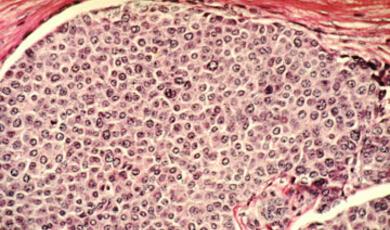Mad, bad or sad?
Share
- Details
- Text
- Audio
- Downloads
- Extra Reading
Personality disorders are a contentious issue in psychiatry. How many are there and how reliable is their diagnosis? Are we just medicalising bad behaviour and social inadequacy. How should medical and criminal justice sectors divide responsibility? This is part of Professor Wilson's series of lectures.
The other lectures are:
Soothing the Savage Beast
The Pursuit of Happiness
The Psychology of Politics
Whatever turns you on?
Profiling a Killer
Download Text
17 January 2012
Mad, Bad or Sad?
Professor Glenn D Wilson
Last week a celebrity chef was caught shoplifting from his local supermarket. He expressed great regret and cited overwork, stress, and sexual abuse in childhood. However, he was still baffled about the reasons for his behaviour and announced that he would immediately seek therapy. Was he slightly mad, slightly sad, slightly bad – or perhaps a bit of all three? What once seemed simple has become one of the issues of our day.
Many psychologists are concerned about the use of diagnostic systems that classify maladaptive behaviours as illnesses when they are better understood as being on a continuum with normality. There is a growing tendency to medicalise behaviours that are just distressing or upsetting, perhaps encouraged by medical insurance and drug companies. Medical insurance payments in the U.S. are often contingent on a formal “diagnosis” and, once a “disease” has been identified, drugs and surgical procedures are produced to address it.
Consider the phenomenal rise in the diagnosis and treatment of Attention Deficit Hyperactivity Disorder (ADHD). As many as one in five American children is taking Ritalin and prescriptions in Britain have doubled in five years (Daily Mail, 13/6/11) despite the lack of any satisfactory medical test for ADHD. In fact, the behaviours for which Ritalin is prescribed sound typical of naughty, inattentive boys, especially those on fast-food diets, who lack exercise and who stay up late to watch TV or play video games. Nobody is sure about the long-term effects of stimulants on the developing brain and there is concern about financial incentives in the form of disability allowances paid to the parents of children diagnosed with ADHD.
Something similar is happening with women and depression (Naish, 2011). About twice as many women as men are diagnosed and, if one is to go by the prescription of anti-depressant drugs such as Prozac, rates are soaring. Depression is a real condition, but what would account for this escalation? Are women that much more put upon today than in the past, or could aggressive drug marketing be contributing? In the 1960s to 1980s vast numbers of tranquillizers like Valium were prescribed for women’s “anxiety”. These fell out of favour when found to be addictive and since then anti-depressants seem to have taken over as “mother’s little helper”. NICE guidelines say that talk therapies like cognitive behaviour therapy should be the first-line treatment for mild depression but this is difficult to arrange.
Many sexual “disorders” would have been considered normal variations in years past. Now anything less than bedroom bliss is dealt with as a disease. Women with orgasm difficulty or hypoactive sexual desire (around half the female population) are recommended testosterone-enhancing drugs, while the quarter of men with premature ejaculation are now offered “radio-frequency nerve ablation” to reduce the sensitivity of the nerves carrying pleasure signals from genitals to brain. This seems extreme given that time might have the same effect. Men with sex addiction (promiscuity) are referred for anti-testosterone “therapy” . Who are these treatments intended to benefit – the patient or their partner?
The classification of mental disorders is a moveable feast. The best known system is the American Psychiatric Association DSM-4 (Diagnostic and Statistical Manual, 4th Revision). This is currently under review; drafts have been issued by the APA taskforce and the final DSM-5 is expected in 2013. One new condition that has been suggested (by one sexologist) is Absexuality, dubbed the Mary Whitehouse Syndrome because it refers to the thrill of being appalled by salaciousness. It may be recalled that the anti-porn campaigner was so upset by Kenneth Tynan’s use of the F-word on TV that she wrote to the Queen saying he should have his bottom spanked.
Other possible categories include hebephilia (sexual desire for early adolescents), coercive paraphilic disorder (forcing people into sexual acts they dislike) sluggish cognitive tempo disorder (laziness), negativistic personality disorder (whinging) nicotine use disorder (smoking) andintermittent explosive disorder (tantrums). Not all of these will make the final list but the more diagnostic categories there are, the more business there is for therapists and the more potential profit for drug companies. However, there is increasing concern about the progressive medicalising of eccentricity and bad behaviour (Wakefield, 2011). Sociologists say we risk losing the distinction between people who are mentally ill and those showing normal stress responses to social conditions such as loss of status, resources and attachments (Horwitz, 2007).
A notable thing about DSM categories is that they are agreed by committee and they evolve with time and cultural context. When homosexuality was illegal in the UK it was regarded as an illness, with its own numerical code. This view has its residuals. Bartlett et al (2009) found that 17% of UK mental health professionals had treated clients for homosexuality and 4% would do so in the future, despite a lack of evidence that sex orientation can be altered by therapy and the possibility that it may actually do harm (Wilson & Rahman, 2005).
Most clinicians no longer regard homosexuality as an illness and nor does the DSM. Sexual orientation disturbance (SOD) was replaced on the list in 1980 with egodystonic homosexuality (EDH). This was deleted in 1987, though it sneaked back in under Sexual disorders not otherwise specified (“persistent and marked distress about one’s sexual orientation”). In these politically correct times, homophobia may soon make an entrance as an official mental disorder.
The idea of sexual addiction (to become Hypersexuality in DSM-5?) emanates from feminist demands that men stop philandering. Paradoxically, this medical-sounding condition is sometimes embraced by men seeking to deny responsibility for their bad behaviour, the message being “I can’t help myself”. However, evolutionary psychologists have shown that it is natural for men to pursue multiple partners and sexual addiction seems to be nothing more than high sex drive (Winters et al, 2010). Of course, libido may be so strong as to become inconvenient (threatening marital stability or leading to charges of rape/harassment) in which case some sort of self-control therapy may be appropriate. However, therapy must be in the best interests of the client – not others who might want them restrained.
The issues surrounding psychiatric diagnosis are particularly salient with respect to personality disorders. These are grouped by the DSM into three main clusters:
1. Odd-eccentric (Schizoid, Paranoid),
2. Erratic-dramatic (Anti-social, Borderline, Histrionic, Narcissistic)
3. Anxious-fearful (Avoidant, Dependent, Obsessional-compulsive).
Following the medical model, clinicians have to say whether an individual should have the label attached to them as a “yes-no” decision based on certain specified criteria.
Academic psychologists regard this approach as misleading because, in the real world people vary continuously on troublesome personality traits and hence cannot be pigeon-holed (Widiger, 1993). They point out that the categories are unreliable in that clinicians fail to agree on which labels to apply to a client and there is a risk of using them to stigmatise people (BPS, 2011).
Some years ago, I was asked by a solicitor if I could diagnose a rape complainant as personality disordered, so doubts could be raised as to her credibility. In fact, she did exhibit many erratic and theatrical behaviours that could be described as histrionic. She was a recreational drug user who had smoked cannabis together with her alleged assailant (an ex-boyfriend) on the night in question. She had a track record of lying about her sexual activities and throwing a tantrum when the lie was exposed. She had invited the defendant to her house late at night, greeted him in pyjamas, and after the supposed assault accepted a cigarette from him before rushing outside nude and screaming rape. Despite all this, I refused to attach the HPD label because I felt it would have only descriptive (not medical) value and might have been used unfairly to discredit her. In my opinion, a diagnosis would have added nothing worthwhile to the description of how she had actually behaved.
Princess Diana (who was sainted after her tragic death) was often accused by the media of suffering from personality disorder. Newspapers pestered me to say whether she was borderline, histrionic, narcissistic, or all those. Again, this was a game I was not prepared to play, regardless of the inducement offered.
Borderline PDis an especially vague category. This is described as extreme black and white thinking, instability in mood and relationships, self-image and identity problems and inclinations toward impulsivity and self-harm. It is diagnosed three times as often in women as men (Hartig & Widiger, 1998). However, it is not clear that these traits cohere meaningfully or what the border is between. Historically, BPD refers to the “twilight” between neurosis and psychosis but there is confusion about what exactly it means and how best to treat it. Self-harm seems to be the key defining characteristic.
Is there such a thing as a split personality? The most famous case (since Dr Jekyll and Mr Hyde) is that described in The Three Faces of Eve (Thigpen & Cleckley, 1954). Eve exhibited three distinct selves at different times. “Eve White” was well-behaved and considerate of other people, “Eve Black” was hedonistic, malicious and destructive, and “Jane” was somewhat bland and dependent. Eve White knew nothing of Eve Black but Eve Black was scornfully aware of Eve White. Jane knew of both the others and expressed wish to meet them. This was supposedly induced by child abuse and cured by hypnotherapy, though both claims were later denied by the patient herself. Eve was trumped in 1973 by the case of Sybil, who supposedly sported 16 personalities; this was also a best-selling book.
The new name for this rare condition is dissociation identity disorder (DID). The fact that it is mostly female suggests a link with what might once have been called “witchcraft” or “possession”. Today it is linked with phenomena like hysterical paralysis, sleep-walking, hypnosis, depersonalisation, out-of-body experiences, psychomotor epilepsy and lycanthropy. Although similar to histrionic PD, it is listed as a neurosis in the DSM. Most cases appear in the U.S. and it is possible that some are coerced by therapists (c.f., false memory syndrome). Sincerity is hard to determine since DID is sometimes adopted to excuse unacceptable behaviour. Kenneth Bianchi (The Hillside Strangler) tried to fake multiple personality to prove his insanity.
A general difficulty in making psychiatric diagnoses is illustrated by the case of David Icke. Previously a TV sports presenter and Green Party spokesman, Icke once declared himself the “son of God” and now maintains that the world is ruled by alien shape-shifting lizards from the constellation of Draco that include The Queen, Tony Blair and George Bush. It would be easy to dismiss him as barking mad - but Icke is fully functioning and successful. He is handsome, articulate and persuasive in his public lectures, sells countless books and CDs and attracts many desirable women. A TV channel is devoted almost entirely to his pronouncements and tickets for his 2012 Wembley Stadium appearance are selling like hot cakes. Some time ago I was taken by The Sun to one of his book launches and asked to assess his sanity. My conclusion was that I didn’t think he was mad but I was not so sure about those who bought his books.
Icke is one of several to prove that a good way to get rich is to start a religion. Another was L. Ron Hubbard, the failed science fiction writer who invented Scientology. Are the ideas of these latter day prophets any crazier than those of mainstream religions? Richard Dawkins would say not – all gods are delusional. But we cannot treat every religious person with anti-psychotic medication and if their religion provides identity and comfort then who is to say it is not good for them?
So far I have discussed mostly the sad and the mad. What of the bad? Anti-social PD refers to “a pervasive disregard for the law and the rights of others” and overlaps with the more familiar term psychopathy that has been tipped to make a come-back in DSM-5. Psychopaths are said to feel no empathy, guilt or remorse. However, their lack of concern for the feelings of others may be secondary to their impulsiveness – the need to pursue gratification due to a hyper-reactive dopamine reward system in the brain (Buckholtz et al, 2010).
Although there is a strong association between psychopathy and criminality, this is not always the case. Babiak & Hare (2006) estimate that 4% of corporate executives are clinical psychopaths as assessed with Robert Hare’s Psychopathy Checklist (compared with 1% for the general population.) They are attracted to the high-risk/ high-gain culture of the corporate world and, although they are not team players, and are actually poor leaders, their charm, cunning and recklessness help them climb the corporate ladder. It has been suggested that positive experiences such as a happy childhood divert them from a life of crime, but high IQ might be their real salvation. The existence of functioning, successful psychopaths further confirmed by the fact that many dictators would fit the diagnostic criteria of anti-social, narcissistic, paranoid and sadistic PD (Fallon, 2011).
If a psychopath is involved in criminal behaviour, whose responsibility is it – mental health services or the courts? The usual answer is that since psychopathy cannot be treated effectively then it is a matter for the judiciary. Treatments are available for psychopathy but, in any case, it should not matter too much because the real issue is one ofdangerousness. If an individual represents a continuing danger to the public then secure containment is necessary, regardless of whether they are mad or bad. Various forms of treatment/rehabilitation can be attempted but it may turn out that they need indefinite incarceration.
It seems to me we are confused about what prison is for – punishment, retribution, deterrent, rehabilitation, or just protection of the public. I believe prison should be used only for the last of these. If the punitive aspect is removed from secure facilities, then the distinction between health and penal institutions becomes academic and they can be equally humane. Punishment doesn’t usually work with psychopaths anyway because they are not responsive to fear of consequences. For others who might be deterred by the threat of punishment, there are other possible penalties – heavy fines for fraudsters, community service for juvenile delinquents, etc. Unfortunately, we crowd our prisons with people who have offended but are not criminal personalities (e.g., motorists who have fallen asleep at the wheel) while giving bail to others from whom the public deserves protection (e.g., career burglars).
Personality disorders are not illnesses like measles or epilepsy. However, some system of classification is needed for descriptive and research purposes. It has been known for some time that malfunctions in the frontal part of the brain can lead to unrestrained behaviour (c.f., the classic case of Phineas Gage) and modern research is confirming that connections between the mid-brain and frontal lobes are often impaired in psychopaths (Motzkin et al, 2011). Around one-third of suicide victims meet the criteria for one or more PDs, particularly anti-social, borderline, narcissistic and depressive (Bronisch, 1996).
The three main clusters of personality disorder correspond roughly to the popular concepts of mad, bad and sad. They are also reminiscent of the three major personality types identified by Eysenck using factor analysis (Psychoticism, Extraversion and Neuroticism). The Eysenck Personality Profiler (EPP: Eysenck et al, 1999) is a contender to replace the DSM but there are others, such as the Big-5, as well as tailored instruments like those of Millon (2008). Of course, self-report questionnaires are fakeable so in some circumstances we need to look towards brain-based assessments that cannot be manipulated.
It is too late to abandon terms like depression, anxiety, distortion of reality, antisocial or histrionic behaviour. However, we can replace discrete categories with evidence-based cut-offs along various dimensions, recognising that these things usually exist as a matter of degree (Jarrett, 2009). In the medical world, this is already done with things like blood pressure, cholesterol and obesity – we accept that people vary continuously and there comes a point where treatment is indicated. It is a promising sign that some in the APA working party are urging a change in this direction for the DSM-5.
References
Babiak, P. & Hare, R.D (2006) Snakes in Suits: When Psychopaths Go to Work. New York: Harper & Collins.
Bartlett, A. et al (2009) The response of mental health professionals to clients seeking help to change or redirect same-sex sexual orientation. BMC Psychiatry, online 29/3/09.
British Psychological Society Comment (2011) The Psychologist, 24, 8, 566.
Bronisch, T (1996) The typology of personality disorders: diagnostic problems and their relevance for suicidal behaviour. Crisis: The Journal of Crisis Intervention and Suicide Prevention, 17, 55-58.
Buckholtz, J.W. et al (2010) mesolimbic reward sensitivity in individuals with psychopathic traits. Nature Neuroscience, DOI: 10.1038/nn.2510.
Eysenck, H.J. et al (1999) The Eysenck Personality Profiler: Short Form. Cymeon, Sydney.
Fallon, J (2011) The mind of a dictator.Psychology Today, June 9.
Hartig, C. & Widiger, T. (1998) Gender differences in the diagnosis of mental disorders: conclusions and controversies of the DSM4. Psychological Bulletin, 123, 260-278.
Horwitz, A.V. (2007) Transforming normality into pathology: The DSM and the outcomes of stressful social arrangements. Journal of Health and Social Behaviour, 48, 211-222.
Jarrett, C. (2009) Forum web chat. The Psychologist, 22, 653.
Millon, T. (2008) The Millon Inventories: A practitioners’ guide to personalised clinical assessment. Guilford Press.
Motzkin, J.C. et al (2011) Reduced prefrontal connectivity in psychopathy. The Journal of Neuroscience, 31, 17348-17357.
Naish, J (2011) Why are more women depressed? Daily Mail, 13/9/11.
Thigpen, C & Cleckley, H.M. (1954) A case of multiple personality. Journal of Abnormal and Social Psychology, 49, 135-151.
Wakefield, J.C. (2011) The DSM-5’s proposed new categories of sexual disorder: The problem of false positives in sexual diagnosis. Clinical Social Work, DOI 10.1007/s10615-001.
Widiger, T.A. (1993) The DSM3R categorical personality diagnoses: A critique and alternative. Psychological Inquiry, 4, 75-90.
Wilson, G.D. & Rahman, Q. (2005) Born Gay: The Psychobiology of Sex Orientation. London: Peter Owen.
Winters, J., et al (2010) Dysregulatory sexuality and high sexual desire: Distinct constructs? Archives of Sexual Behaviour, 39, 1029-1043.
©Professor Glenn D Wilson, Gresham College 2012
This event was on Tue, 17 Jan 2012
Support Gresham
Gresham College has offered an outstanding education to the public free of charge for over 400 years. Today, Gresham College plays an important role in fostering a love of learning and a greater understanding of ourselves and the world around us. Your donation will help to widen our reach and to broaden our audience, allowing more people to benefit from a high-quality education from some of the brightest minds.


 Login
Login







